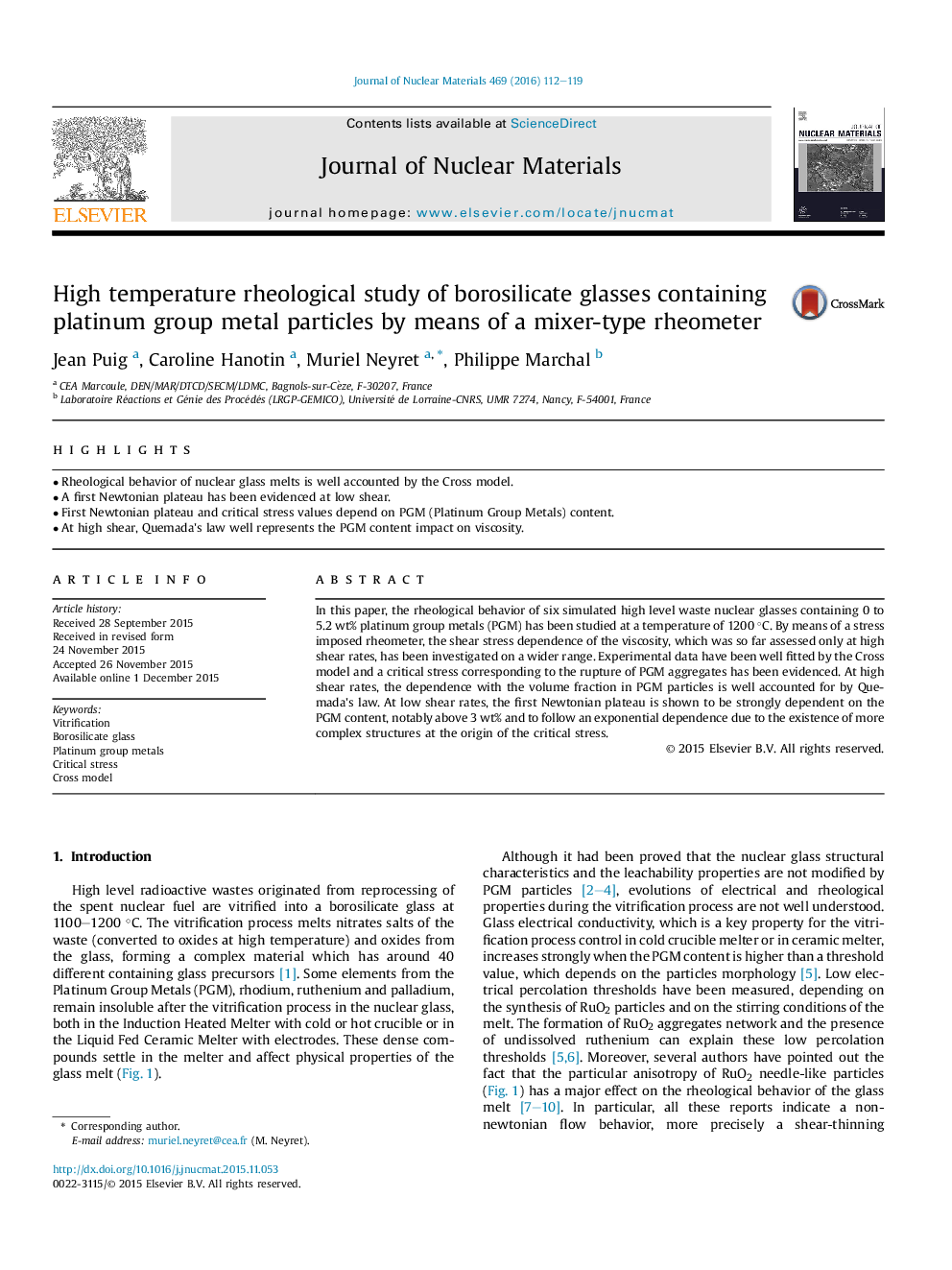| Article ID | Journal | Published Year | Pages | File Type |
|---|---|---|---|---|
| 1564784 | Journal of Nuclear Materials | 2016 | 8 Pages |
•Rheological behavior of nuclear glass melts is well accounted by the Cross model.•A first Newtonian plateau has been evidenced at low shear.•First Newtonian plateau and critical stress values depend on PGM (Platinum Group Metals) content.•At high shear, Quemada's law well represents the PGM content impact on viscosity.
In this paper, the rheological behavior of six simulated high level waste nuclear glasses containing 0 to 5.2 wt% platinum group metals (PGM) has been studied at a temperature of 1200 °C. By means of a stress imposed rheometer, the shear stress dependence of the viscosity, which was so far assessed only at high shear rates, has been investigated on a wider range. Experimental data have been well fitted by the Cross model and a critical stress corresponding to the rupture of PGM aggregates has been evidenced. At high shear rates, the dependence with the volume fraction in PGM particles is well accounted for by Quemada's law. At low shear rates, the first Newtonian plateau is shown to be strongly dependent on the PGM content, notably above 3 wt% and to follow an exponential dependence due to the existence of more complex structures at the origin of the critical stress.
